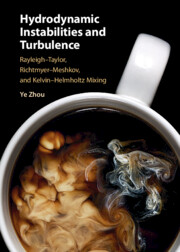 Hydrodynamic Instabilities and Turbulence
Hydrodynamic Instabilities and Turbulence Book contents
- Frontmatter
- Dedication
- Contents
- Preface
- Acknowledgments
- Part 1 Fundamentals
- Part 2 Hydrodynamics of Complex Flows
- Part 3 From the Microscopic to Cosmic Scales
- 18 High-energy-density physics
- 19 Inertial confinement fusion implosion
- 20 Laboratory applications
- 21 Astrophysical and space applications
- 22 Mixmodels
- 23 Numerical simulations of mixing
- 24 Does 2D turbulence resemble 3D turbulence?
- References
- Index
24 - Does 2D turbulence resemble 3D turbulence?
from Part 3 - From the Microscopic to Cosmic Scales
- Frontmatter
- Dedication
- Contents
- Preface
- Acknowledgments
- Part 1 Fundamentals
- Part 2 Hydrodynamics of Complex Flows
- Part 3 From the Microscopic to Cosmic Scales
- 18 High-energy-density physics
- 19 Inertial confinement fusion implosion
- 20 Laboratory applications
- 21 Astrophysical and space applications
- 22 Mixmodels
- 23 Numerical simulations of mixing
- 24 Does 2D turbulence resemble 3D turbulence?
- References
- Index
Summary
Due to the time-consuming nature of fully 3D simulations of turbulence mixing induced by hydrodynamic instabilities, it is desirable to run computations in 2D when possible. But does 2D turbulence resemble 3D turbulence? The relevance of idealized 2D turbulence to certain aspects of atmospheric motion has been emphasized in many works. Yet molecular mixing occurs at the interfaces of the fluids, and the ratios of area-to-volume in three dimensions are very different than the length-to-area ratios in two dimensions. This has prompted some well-known scientists to claim that "two-dimensional turbulence, ... is a consequence of the construction of large computers." I will investigate this issue in detail and point out that the large-scale structures evolve over a similar time scale in 2D and 3D, indicating that 2D simulations are useful for providing some indication of the amount of instability growth at an interface.
- Type
- Chapter
- Information
- Hydrodynamic Instabilities and TurbulenceRayleigh–Taylor, Richtmyer–Meshkov, and Kelvin–Helmholtz Mixing, pp. 488 - 513Publisher: Cambridge University PressPrint publication year: 2024
